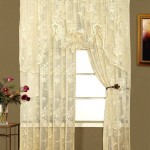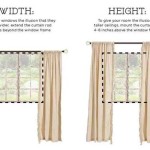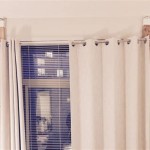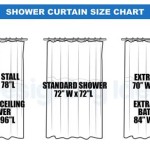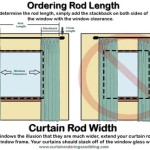Fly Curtains For Patio Doors: A Comprehensive Guide
Patio doors offer seamless access to outdoor spaces, enhancing the aesthetic appeal and functionality of a home. However, this portal can also become an entryway for unwanted insects, particularly flies. Fly curtains present a practical solution, providing a barrier against these pests while allowing fresh air to circulate. This article will delve into the various aspects of fly curtains designed for patio doors, exploring their types, benefits, installation, maintenance, and selection criteria.
Types of Fly Curtains for Patio Doors
The market offers a diverse range of fly curtains, each with unique materials, designs, and operational mechanisms. The choice depends on individual preferences, aesthetic considerations, and the level of protection desired. Understanding the different types available is crucial for making an informed purchase decision.
Chain Fly Curtains: Constructed from interlocking metal chains, these curtains offer a robust and durable barrier. The weight of the chains makes them effective at deterring flies and other insects. Chain fly curtains are particularly well-suited for high-traffic areas due to their resilience and ease of maintenance. They are available in various finishes and colors, allowing for customization to match the exterior or interior décor. The metallic nature of the chains also provides a touch of industrial chic to the patio entrance.
Beaded Fly Curtains: Composed of strands of decorative beads, these curtains offer a more visually appealing alternative to chain curtains. Beads can be made from various materials such as wood, plastic, or glass, offering a wide range of aesthetic options. While effective at deterring flies, beaded curtains may not be as robust as chain curtains, especially in high-traffic areas. Cleaning can also be more intricate, depending on the bead material and design. They offer better aesthetic value and are often regarded as decorative patio accessories in addition to their insect-repelling function.
Strip Fly Curtains: These curtains are made from overlapping strips of PVC or vinyl, creating a flexible barrier. Strip curtains are particularly effective at preventing flies from entering while allowing easy passage for people and pets. They are commonly used in commercial settings, such as restaurants and warehouses, but also find application in residential patios. The transparent nature of the strips allows for light to pass through, maintaining visibility. They are easy to clean and maintain, typically requiring only wiping with a damp cloth. These curtains can also help retain heat during cooler months, offering some energy saving benefit.
Magnetic Screen Curtains: These curtains are made from mesh fabric with magnetic closures running down the center. The magnets automatically snap shut after someone passes through, ensuring a tight seal against insects. Magnetic screen curtains are easy to install and remove, making them a convenient option for seasonal use. The mesh material allows for excellent airflow while effectively blocking flies and mosquitoes. These are especially popular in family homes given their hands-free operation and pet-friendliness.
Fabric Fly Curtains: Crafted from lightweight fabrics such as cotton or polyester, these curtains offer a more traditional and aesthetically pleasing option. Often treated with insect repellent, they provide a visual barrier against flies. Fabric curtains are available in a wide variety of colors and patterns, allowing for seamless integration with the patio décor. However, they may require more frequent cleaning or washing and may not be as durable as other types of fly curtains. The effectiveness depends greatly on the density of the fabric and the repellent applied. They are also more susceptible to damage from elements such as rain or strong winds.
Benefits of Using Fly Curtains for Patio Doors
Implementing fly curtains for patio doors provides a multitude of benefits, ranging from insect control to improved air circulation and aesthetic enhancements. The advantages can significantly enhance the enjoyment and usability of outdoor spaces.
Effective Insect Control: The primary benefit of fly curtains is their ability to deter flies and other insects from entering the home. By creating a physical barrier, they prevent pests from infiltrating living spaces, reducing the need for chemical insecticides. This is particularly beneficial for individuals with allergies or sensitivities to insect bites. Effective insect control contributes to a more hygienic and comfortable living environment, especially during peak insect seasons. This can also prevent the spread of diseases carried by flies and mosquitoes.
Improved Air Circulation: Fly curtains allow for the free flow of air while preventing insect entry. This promotes natural ventilation, reducing the need for air conditioning and lowering energy consumption. Improved air circulation also helps to maintain a comfortable indoor temperature and reduces humidity levels. It keeps the air fresh and removes stuffiness, a common issue in enclosed spaces. This is crucial, especially in warmer climates.
Enhanced Privacy: Certain types of fly curtains, such as beaded or fabric curtains, can provide a degree of privacy, shielding the interior of the home from prying eyes. This is particularly beneficial for patios that are located in close proximity to neighboring properties. Enhanced privacy contributes to a sense of security and seclusion, allowing for more relaxed enjoyment of outdoor spaces. The level of privacy depends on the opacity and density of the curtain material.
Aesthetic Appeal: Fly curtains can enhance the visual appeal of a patio area. Available in a variety of styles, colors, and materials, they can complement the existing décor and add a touch of elegance or whimsy. Beaded curtains, in particular, can serve as decorative elements, adding visual interest and texture to the space. Choosing a design that matches the overall theme of the patio can elevate the ambiance and create a more inviting atmosphere.
Ease of Installation and Maintenance: Most fly curtains are designed for easy installation, often requiring only basic tools and minimal effort. Many models can be easily mounted on existing door frames or hung from curtain rods. Maintenance is also straightforward, with most curtains requiring only occasional cleaning. Chain and strip curtains can be easily wiped down, while fabric curtains can be machine washed. The simplicity of installation and maintenance makes fly curtains a practical and user-friendly solution for insect control.
Installation and Maintenance of Fly Curtains
Proper installation and regular maintenance are crucial for ensuring the effectiveness and longevity of fly curtains. Following the manufacturer's instructions and implementing routine cleaning practices will maximize the benefits of this insect control solution.
Installation Procedures: The installation process varies depending on the type of fly curtain. Magnetic screen curtains typically come with adhesive strips or tacks for attaching them to the door frame. Chain and beaded curtains often require hanging from a curtain rod or track. Strip curtains are usually mounted on a header bar that is then attached to the door frame. Careful measurements should be taken to ensure a proper fit and prevent gaps that insects could exploit. Precise installation ensures effectiveness and also saves time and effort in the long run.
Cleaning Methods: Regular cleaning is essential for maintaining the hygiene and appearance of fly curtains. Chain and strip curtains can be cleaned with a damp cloth and mild detergent. Beaded curtains may require more delicate cleaning methods, depending on the bead material. Fabric curtains can be machine washed according to the manufacturer's instructions. Removing dust and debris regularly prevents buildup that can attract insects or cause the curtain to deteriorate. Frequent cleaning also ensures that the curtain remains visually appealing.
Repair and Replacement: Over time, fly curtains may require repairs or replacement due to wear and tear. Broken chains or beads can be replaced, and torn fabric can be mended. If the damage is extensive, it may be more cost-effective to replace the entire curtain. Inspecting the curtain regularly for signs of damage allows for timely repairs and prevents minor issues from escalating. Replacing damaged components quickly ensures that the curtain continues to provide effective insect control.
Seasonal Storage: During the off-season, fly curtains can be stored to prevent unnecessary wear and tear. Clean the curtain thoroughly before storing it in a dry, protected area. Fabric curtains should be folded neatly, while chain and beaded curtains can be hung to prevent tangling. Proper storage prolongs the lifespan of the curtain and ensures that it is ready for use when needed. This is especially important for types of fly curtains that are used seasonally only.
Selecting the right fly curtain for patio doors involves careful consideration of various factors, including the type of insects prevalent in the area, the desired level of privacy, the aesthetic preferences, and the ease of installation and maintenance. By evaluating these aspects, homeowners can choose a fly curtain that effectively protects their homes from pests while enhancing the beauty and functionality of their outdoor spaces.

Sliding Fly Screen For Patio Doors Diy Kit Streme

Fly Curtains For Patio Doors Perybase

Glitter String Curtain Patio Net Fringe Door Fly Screen Window Room Divider Home

Fly Screens For Patio Doors Exclusive And Pet Windows

Sliding Fly Screen For Patio Doors Made To Measure

Magnetic Patio Flyscreen Door Grey And Off White Queen

Fly Screens For Patio Doors Exclusive And Pet Windows

Chain Patio Retractable Sliding Magnetic Insect Fly Net Screen Flyscreen Door Doors On Aluminum Pergola Alunotec

New Magnetic Screen Door Mesh Patio Net Anti Scratch Bugs Fly Curtain

Flyscreen Magnetic Patio Or French Door Queen

